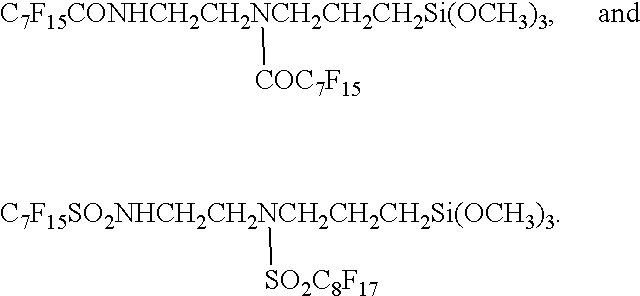Electrophotographic photosensitive membe,r electrophotographic apparatus using same and device unit using same
a photosensitive, electrophotographic and electrophotographic technology, applied in the field of electrophotographic apparatus, can solve the problems of inability to provide uniform image, and inability to meet the requirements of photosensitivity,
- Summary
- Abstract
- Description
- Claims
- Application Information
AI Technical Summary
Benefits of technology
Problems solved by technology
Method used
Image
Examples
example 2
A photosensitive member was prepared in the same manner as in Example 1 except that 45 parts of tetrafluoroethylene resin particles and 45 parts of surface-treated antimony-containing tin oxide fine particles were used in the step of forming the dispersion for a protective layer.
example 3
A photosensitive member was prepared in the same manner as in Example 1 except for using an acrylic polymerizable monomer of the formula: ##STR10##
instead of the acrylic polymerizable monomer used in Example 1.
example 4
A photosensitive member was prepared in the same manner as in Example 1 except that a dispersion for a protective layer was prepared in the following manner.
100 parts of antimony-containing tin oxide fine particles ("T-1", mfd. by Mitsubishi Material K.K.; average particle size of 0.02 .mu.m), 30 parts of fluorine-modified silicone oil ("FL-100", mfd. by Shinetsu Kagaku K.K.), and 300 parts of toluene were subjected to milling for 1 hour by a milling device. After the milling, the mixture was filtered and then the filtrate was washed with toluene, followed by drying and heat treatment for 10 minutes at 300.degree. C. to effect surface treatment of the fine particles. Then, 25 parts of an acrylic polymerizable monomer, to be used as a binder resin, of the formula: ##STR11##
0.1 part of 2-methylthioxanthone as a photopolymerization initiator, 50 parts of the above-prepared surface-treated antimony-containing tin oxide fine particles, and 300 parts of toluene were mixed by a sand mill f...
PUM
| Property | Measurement | Unit |
|---|---|---|
| Fraction | aaaaa | aaaaa |
| Fraction | aaaaa | aaaaa |
| Fraction | aaaaa | aaaaa |
Abstract
Description
Claims
Application Information
 Login to View More
Login to View More - R&D
- Intellectual Property
- Life Sciences
- Materials
- Tech Scout
- Unparalleled Data Quality
- Higher Quality Content
- 60% Fewer Hallucinations
Browse by: Latest US Patents, China's latest patents, Technical Efficacy Thesaurus, Application Domain, Technology Topic, Popular Technical Reports.
© 2025 PatSnap. All rights reserved.Legal|Privacy policy|Modern Slavery Act Transparency Statement|Sitemap|About US| Contact US: help@patsnap.com



